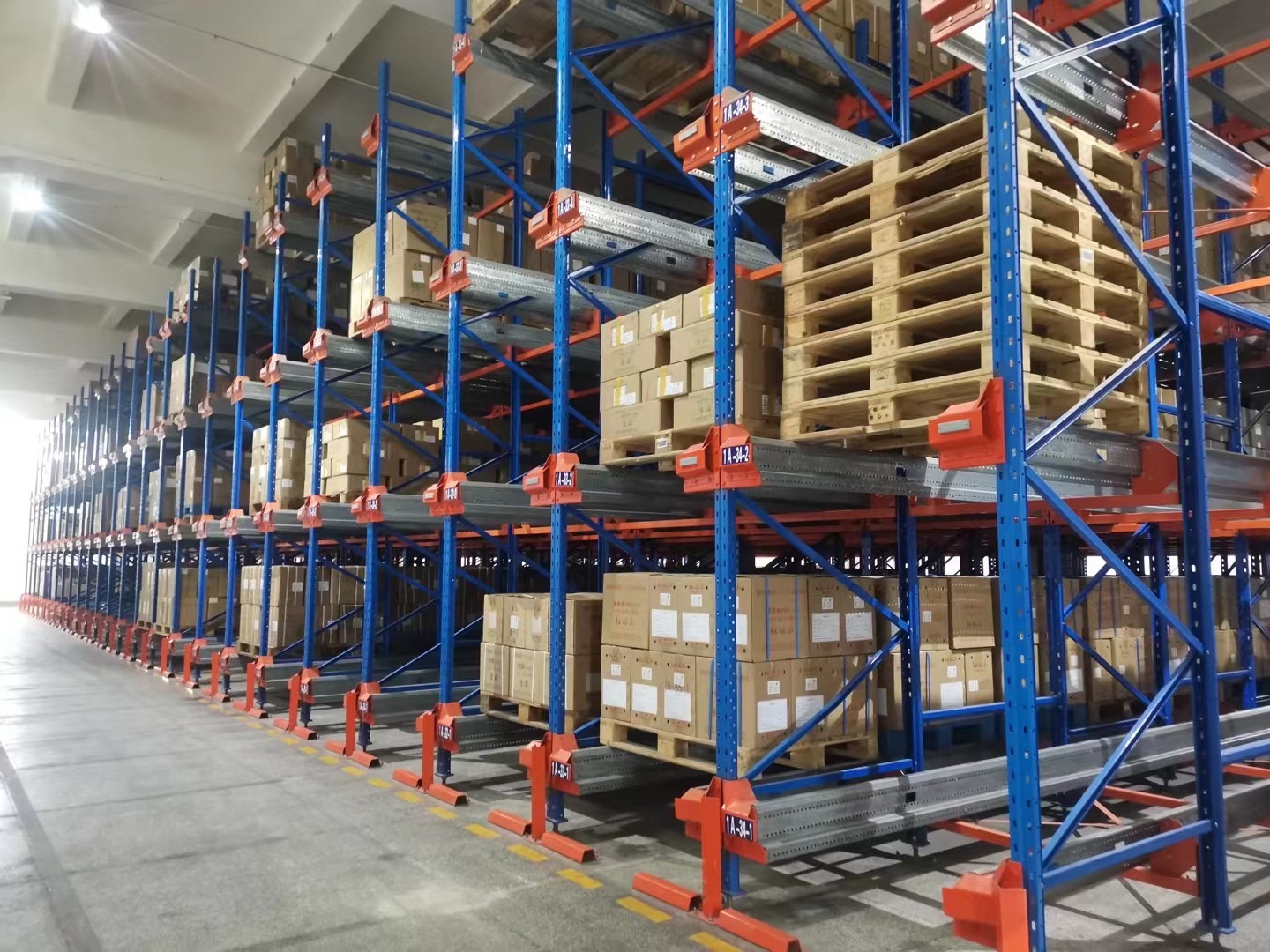In the relentless pursuit of warehouse optimization and space utilization, push back racking systems have emerged as a premier high-density storage solution. They masterfully combine the selectivity of pallet racking with the dense storage capability of drive-in systems. However, the performance, durability, and safety of your push back rack system are profoundly dependent on one critical decision: your choice of push back rack suppliers. Not all suppliers are created equal, and selecting the wrong partner can lead to a cascade of operational headaches, safety hazards, and financial losses.
This comprehensive guide will navigate you through the seven most crucial factors to consider when evaluating push back rack suppliers. Furthermore, we will delve into the common problems and questions that arise during the selection, installation, and maintenance phases, providing you with the knowledge to avoid costly mistakes and secure a system that delivers ROI for years to come.

Before diving into supplier selection, it's essential to understand the product itself. A push back rack system is a Last-In, First-Out (LIFO) storage system. carts are nested on inclined rails within each bay. When a pallet is loaded into the system, it pushes the previous pallets back. When unloading, the next pallet moves forward gravitationally to the pick face. This design allows for deep storage (typically 2-5 pallets deep) while still providing some direct access to each SKU, making it ideal for high-volume, medium-to-slow-moving products.
The complexity of this system—relying on precise engineering, robust carts, and smooth rails—is exactly why your choice of push back rack suppliers is so vital.
Push back rack suppliers are far more than just equipment vendors. They are strategic partners in your warehouse's success. A reputable supplier provides:
Expertise and Consultation: They analyze your inventory profile, SKU velocity, and warehouse layout to determine if push back is the optimal solution.
Quality Manufacturing: They source high-grade steel and components to build a system that can withstand daily operational stresses.
Precision Engineering: They ensure the system design complies with all relevant safety standards and is tailored to your specific building and load requirements.
Professional Installation: They employ trained crews to erect the system correctly, ensuring safety and functionality from day one.
Ongoing Support: They offer maintenance services, replacement parts, and expert advice long after the initial sale.
Choosing a supplier who excels in all these areas is non-negotiable for a successful implementation.
1. Industry Experience and Reputation
The longevity and track record of push back rack suppliers are strong indicators of their reliability. Look for suppliers with a proven history of successful installations in warehouses similar to yours. Check online reviews, ask for client testimonials, and seek case studies. An experienced supplier will have encountered and solved a wide array of challenges, which they can leverage to benefit your project.
2. Quality of Materials and Manufacturing
The integrity of the steel and the quality of the components (especially the carts and wheels) are paramount. Inquire about the grade of steel used (e.g., ASTM A1011), the thickness of the beam and upright steel, and the finishing process (e.g., powder coating for corrosion resistance). High-quality push back rack suppliers will be transparent about their material specifications and manufacturing processes, often boasting ISO certifications.
3. Engineering and Design Capabilities
Proper design is the backbone of a safe and efficient racking system. Your chosen supplier should employ certified rack engineers who use advanced design software. They must conduct a thorough site analysis and provide detailed layout plans and load calculations. This engineering rigor ensures the system can handle your specified weights and is compliant with local building codes and safety regulations like OSHA and RMI (Rack Manufacturers Institute) standards.
4. Comprehensive Services Offered
The best push back rack suppliers offer a true turnkey service. This includes:
Initial Consultation and Space Planning
Custom Engineering and Design
Manufacturing and Logistics
Professional Installation by Certified Teams
Project Management
Post-Installation Inspection and Maintenance
A supplier that handles the entire process ensures accountability and a seamless experience.
5. Safety Standards and Compliance
Safety should never be compromised. Verify that the supplier's designs and products adhere to the highest industry standards, such as those set by RMI. Their installation crews should be trained in safety protocols. The supplier should also provide clear documentation, including load application and rack configuration (LARC) plaques and detailed safety guides for your warehouse staff.
6. Cost Transparency and Value Proposition
While price is always a consideration, the cheapest option is often the most expensive in the long run due to maintenance issues, downtime, and safety risks. Reputable push back rack suppliers provide detailed, transparent quotes that break down costs for materials, engineering, and installation. They focus on the total value and return on investment (ROI)—through space savings, improved efficiency, and reduced product damage—rather than just the initial price tag.
7. After-Sales Support and Warranty
The relationship with your supplier shouldn't end at installation. Inquire about their warranty policy for both structural components and mechanical parts (carts, wheels). Ensure they have a responsive team for sourcing replacement parts and providing ongoing maintenance services. This long-term support is crucial for maximizing the lifespan of your investment.

Even the best systems can encounter issues. A great supplier helps you anticipate and mitigate these common problems.
1. Cart Jamming and Wheel Malfunctions
The Problem: The most frequent issue is carts jamming or wheels seizing up, often due to misloaded pallets, debris on the rails, or inferior component quality.
The Supplier Solution: High-quality push back rack suppliers use durable wheels with high weight ratings and sealed bearings to prevent debris ingress. They also provide comprehensive training for your forklift operators on correct loading techniques to prevent impacts and misalignment.
2. Inadequate System Design for Specific Loads
The Problem: A system designed for uniform, 1,500 lb. pallets will fail catastrophically if used for uneven, 3,000 lb. loads. Incorrect design leads to bent beams, failed carts, and potential collapse.
The Supplier Solution: This is why engineering is critical. Professional push back rack suppliers will meticulously calculate your load dimensions and weights to design a system with the appropriate beam capacity, rail strength, and cart specifications.
3. Poor Installation Leading to Safety Hazards
The Problem: Improper installation—such as unlevel rails, misaligned uprights, or incorrectly secured components—creates immediate safety risks and causes operational inefficiencies.
The Supplier Solution: Always choose push back rack suppliers who employ their own certified installation teams. This guarantees the people setting up the system are experts in that specific product and are accountable to the supplier, ensuring it's built exactly to the engineered design.
4. Lack of Proper Operator Training
The Problem: Forklift operators accustomed to selective racking may damage push back systems by hitting rear guards, ramming pallets, or traveling too quickly.
The Supplier Solution: Top-tier suppliers include operator training as a standard part of their service. They educate your team on the unique characteristics of the system, proper loading/unloading procedures, and daily inspection checklists to identify minor issues before they become major problems.
5. Difficulty Sourcing Replacement Parts
The Problem: Years after installation, a critical cart fails. If your original supplier has gone out of business or doesn't stock parts, you face prolonged downtime.
The Supplier Solution: Partnering with established, reputable push back rack suppliers mitigates this risk. They maintain extensive inventories of replacement parts and can quickly ship them to you, minimizing disruption to your operations.
A partnership with a professional supplier typically follows these steps:
Initial Inquiry: You provide details on your needs, space, and inventory.
Consultation & Site Visit: A representative visits to take measurements and understand your workflow.
Engineering & Proposal: They create a custom layout and provide a detailed quote.
Approval & Manufacturing: Upon order, they manufacture the system to spec.
Scheduling & Installation: A certified team installs the system on schedule.
Training & Handover: They train your staff and provide all documentation.
Ongoing Support: They remain available for inspections, parts, and advice.
Selecting among the myriad of push back rack suppliers is a decision that will impact your warehouse's productivity, safety, and profitability for over a decade. It is not a purchase to be made based on a glossy brochure or the lowest price alone. By meticulously evaluating suppliers based on their experience, quality, engineering prowess, service offerings, and commitment to safety, you invest in a partnership that guarantees a superior return on investment. Do your due diligence, ask the hard questions, and choose a supplier that demonstrates the capability and willingness to be a true partner in optimizing your storage operations. The right push back rack suppliers will provide not just metal and wheels, but a comprehensive, reliable, and efficient storage solution engineered for success.
 Wechat
Wechat
 Whatsapp
Whatsapp